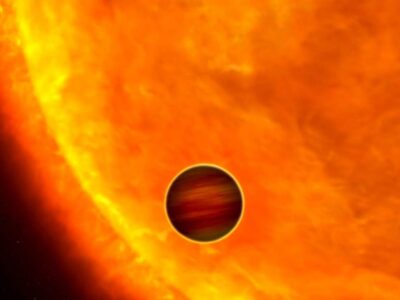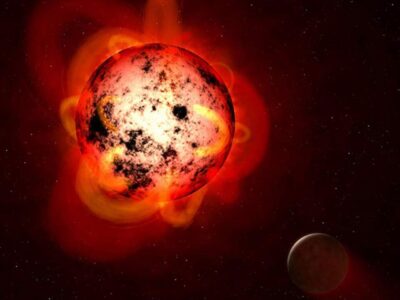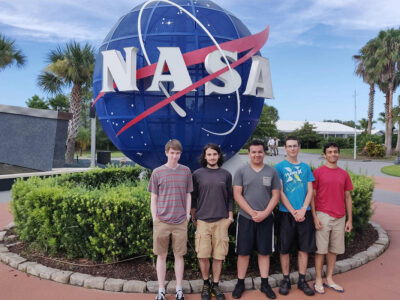Astronomers with the European Southern Observatory (ESO) use the Veritably Large Telescope (VLT) to overlook the welkin in hunt of stars, black holes, worlds, and globes to study. Lately, astronomers used the VLT to spot the closest brace of supermassive black holes to Earth ever discovered. Ultimately, the black hole brace will combine into a single gigantic black hole. The discovery is located in a world called NGC 7727, which lies in the constellation Aquarius.
While these supermassive black holes are the closest to Earth ever discovered, they’re still at an inconceivable distance from our earth of 89 million light- times. Still, they’re significantly near than the former closest supermassive black hole brace that was 470 million light- times down. In addition to being the closest brace of black holes to Earth, the brace also have a significantly lower separation than any other brace of known black holes The brace in NGC 7727 has only 1600 light- times between them. While that’s still a vast distance, astronomers point out this is the first time brace of supermassive black holes have been discovered so near to each other. A distance of 1600 light- times is lower than half the separation of the former record holders. Generally, supermassive black holes live in the center of worlds. Still, they can come dyads when worlds combine, placing them on a collision course that can take millions of times before they combine.
ADVERTISING
Via ESO
Scientists studied the path the black holes are taking, their separation distance, and their rapidity determining the brace will combine into a single supermassive black hole within the coming 250 million times. Astronomers believe that the junction of a brace of black holes of this size could explain how the most massive black holes in the Universe are born.
Astronomer Karina Voggel and her platoon used a fashion for determining the millions of the black holes that looked at how their gravitational pull impacted stars around them. This is the first time that the mass of a brace of black holes has been measured using that system. Measures using this system were possible because of how near the brace of black holes are to Earth. Experimenters reckoned on compliances from the Paranal Observatory in Chile using a tool called MUSE (Multi-Unit Spectroscopic Explorer) in their work. Astronomers also used data gathered by the Hubble Space Telescope to confirm the brace of black holes were classified as supermassive.
Via ESO
The black hole on the right side of the brace is in the core of NGC 7727 and has a mass nearly 154 million times of the Sun. The other black hole in the brace is significantly lower massive at6.3 million times that of the sun. Astronomers had suspected NGC 7727 had two black holes but had been unfit to confirm their reservations in the history because of the lack of high- energy radiation coming from the immediate surroundings. The presence of high- energy radiation would have verified the black holes was The discovery of the supermassive black holes without the emigration of high- energy radiation suggests there could be numerous further analogous black holes hiding in worlds scattered around the macrocosm. Astronomers believe their findings could suggest the total number of supermassive black holes in the known macrocosm is 30 percent advanced than preliminarily believed. Discovering further retired supermassive black hole dyads will come easier when the ESO begins operating its new Extremely Large Telescope latterly this decade. The telescope will be placed in the Atacama Desert in Chile. That telescope will have an instrument called HARMONI able of making discoveries like this significantly further down from Earth than is presently possible.
Astronomers keep the VLT working nearly constantly, making discoveries in the macrocosm. For illustration, inmid-November of this time, astronomers used the VLT to discover a black hole inside a distant star cluster. In that case, the preliminarily unknown supermassive black hole was outside of the Milky Way, and it was discovered by looking at how it told a near star. Of course, the VLT also makes discoveries other than black holes.
In August 2021, astronomers used the VLT to probe rocky exoplanets that were ringing a distant star. The star is L 98-59, and astronomers were keen to probe the planetary system because the star and its exoplanets act our inner solar system. One of the more intriguing discoveries in the planetary system was a rocky exoplanet half the mass of Venus. The earth was the lightest exoplanet ever measured using a fashion known as radial haste.
In October 2020, VLT astronomers discovered a supermassive black hole with six worlds scattered around it. The grouping had was since the macrocosm was lower than a billion times old, making it the first time a close grouping of the type had been discovered from a time so soon after the Big Bang. Astronomers said the grouping of worlds around a supermassive black hole helped ameliorate our understanding of how black holes of the type could come so enormous so snappily.
Another intriguing VLT discovery from May 2020 plant suggestions of a earth being born around a distant star. The youthful star the earth was forming around is called AB Aurigae. During their compliances, astronomers discovered a prominent helical structure with a twist indicating a point where a earth could be forming. As scientists are keen to learn further about how globes form, discoveries like these are welcome additions to humanity’s ever- growing understanding of the process.















![How to solve [pii_email_af9655d452e4f8805ebf] Error?](https://themediahubs.com/wp-content/uploads/2023/02/U9rr3rhWhUvxCSyrdw3r5MZLGTsfOGbJeliDmntx-1-1-400x225.jpg)



![How to solve [pii_email_af9655d452e4f8805ebf] Error?](https://themediahubs.com/wp-content/uploads/2023/02/U9rr3rhWhUvxCSyrdw3r5MZLGTsfOGbJeliDmntx-1-1-180x180.jpg)
Comments